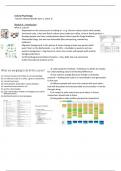Class notes
Cultural Psychology College Notes (500188-B-5) - Modules 1 to 14 (22-23)
- Course
- Institution
Lecture notes from the video lectures from modules 1 to 14 Attention! Notes are in English because the course is only taught in English
[Show more]



